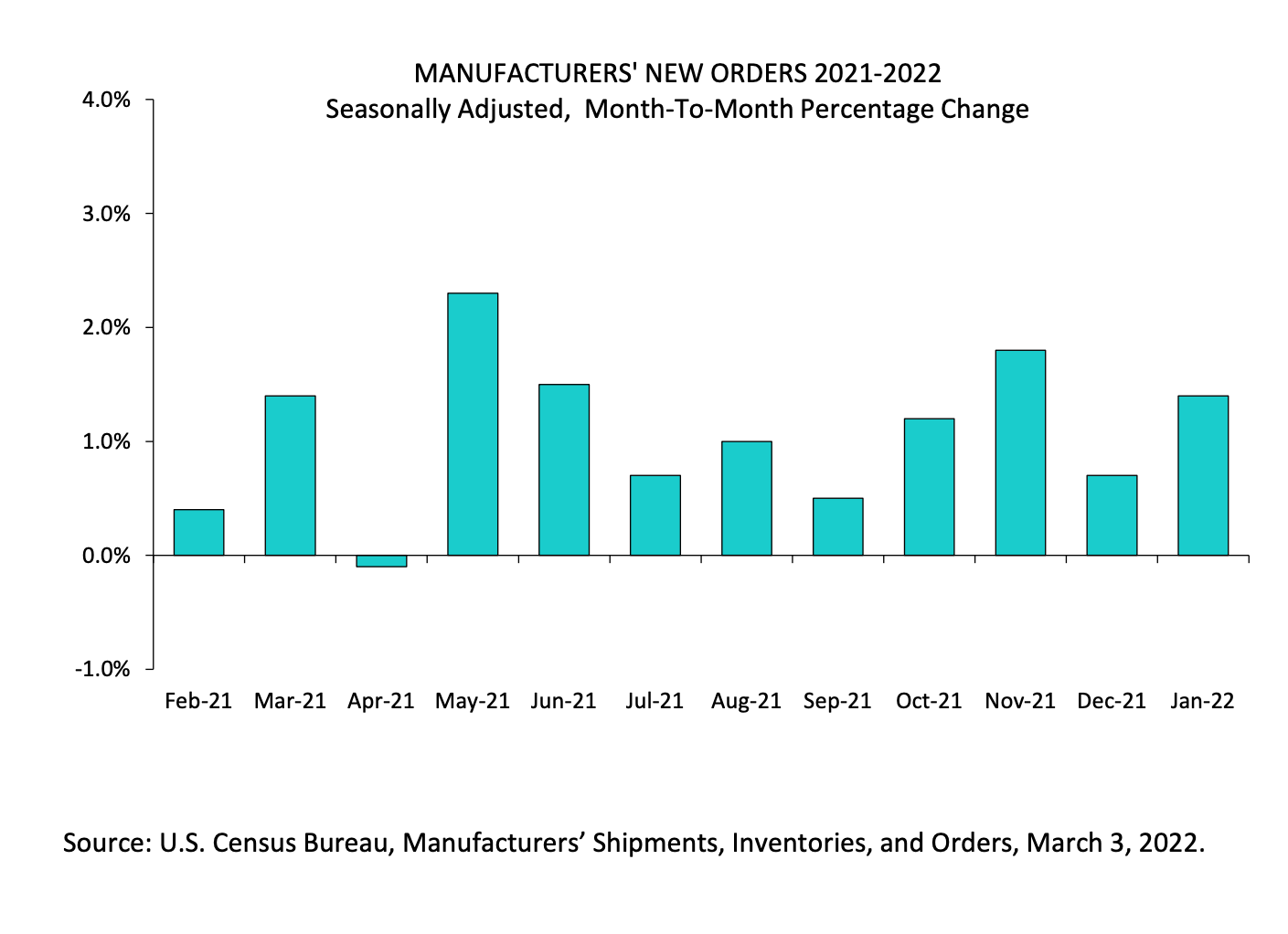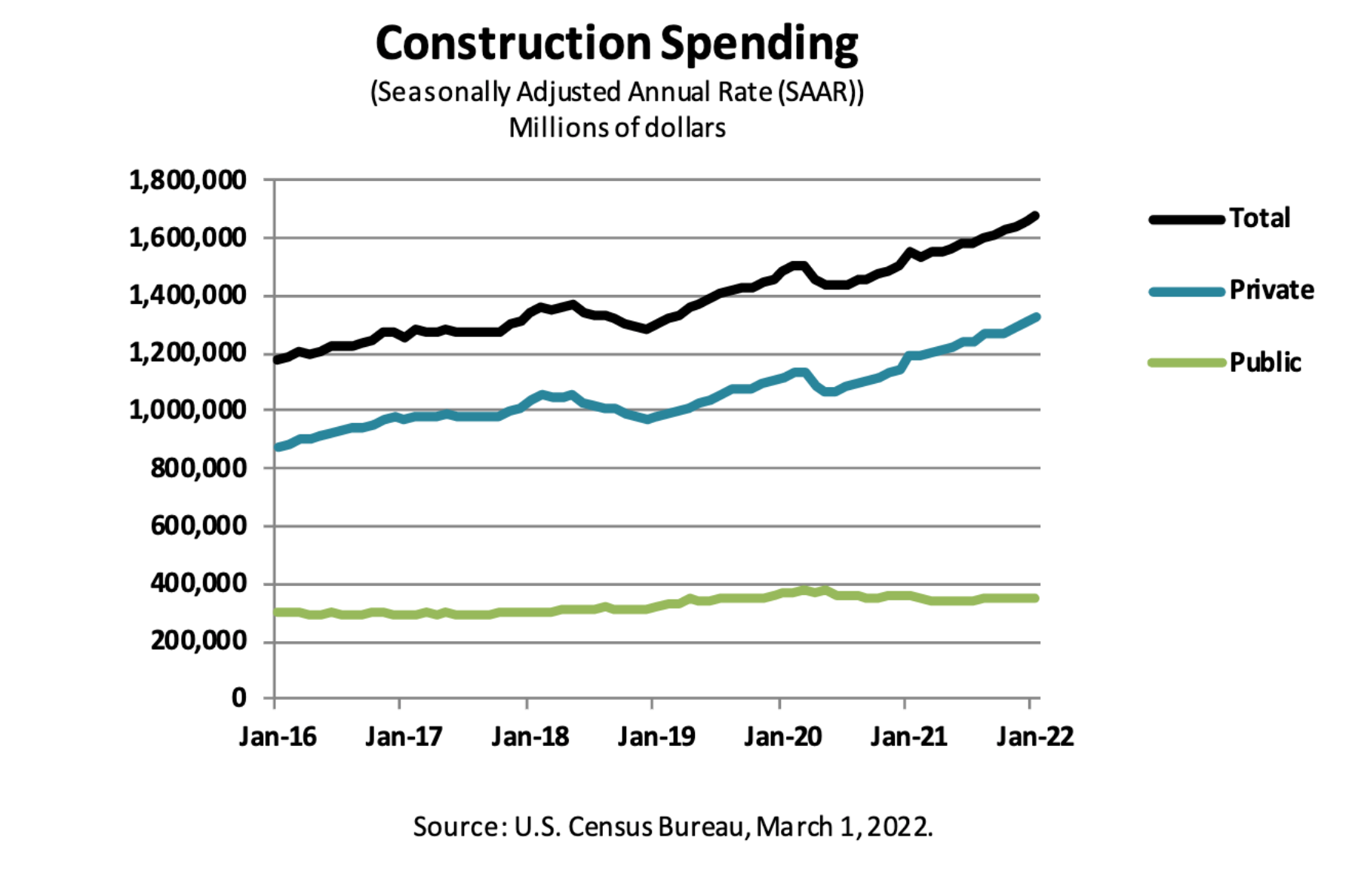The U.S. economy created 678,000 jobs in February, beating economists’ expectations for a second straight month as the unemployment rate dropped to 3.8%. Job growth happened across a variety of sectors, including construction.
“Construction added 60,000 jobs in February, following little change in the prior month,” the Bureau of Labor Statistics announced Friday. “About three-fourths of the over-the-month job gain occurred in specialty trade contractors, with increases in both the residential (+24,000) and nonresidential (+20,000) components. Construction employment is slightly below (-11,000) its February 2020 level.”
Manufacturing added 36,000 jobs in February. Employment in durable goods industries rose by 20,000, with job gains in fabricated metal products (+11,000), machinery (+8,000), electrical equipment and appliances (+4,000), nonmetallic mineral products (+3,000), furniture and related products (+3,000), and primary metals (+3,000).
The growth in manufacturing has been of national interest this week as President Biden touted job gains in that sector in 2021. In Tuesday’s State of the Union address, the president noted the economy added 375,000 manufacturing jobs in the past year and companies announced nearly $200 billion in investments for semiconductor, electric vehicle, battery and critical mineral production and manufacturing in the U.S.
 This week, the U.S. Census Bureau released several reports featuring relevant economic indicators from January for the wholesale distribution industry. New orders for manufactured goods in January — up 20 of the last 21 months — increased $7.6 billion, or 1.4% to $544.2 billion, the U.S. Census Bureau reported. This followed a 0.7% December increase. Shipments, also up 20 of the last 21 months, increased $6.2 billion, or 1.2% to $536.9 billion. This followed a 0.7% December increase. Unfilled orders, up 12 consecutive months, increased $11.7 billion, or 0.9% to $1,283.5 billion. This followed a 0.8% December increase.
This week, the U.S. Census Bureau released several reports featuring relevant economic indicators from January for the wholesale distribution industry. New orders for manufactured goods in January — up 20 of the last 21 months — increased $7.6 billion, or 1.4% to $544.2 billion, the U.S. Census Bureau reported. This followed a 0.7% December increase. Shipments, also up 20 of the last 21 months, increased $6.2 billion, or 1.2% to $536.9 billion. This followed a 0.7% December increase. Unfilled orders, up 12 consecutive months, increased $11.7 billion, or 0.9% to $1,283.5 billion. This followed a 0.8% December increase.
“Construction spending during January 2022 was estimated at a seasonally adjusted annual rate of $1,677.2 billion, 1.3% above the revised December estimate of $1,655.8 billion,” the U.S. Census Bureau also reported. “The January figure is 8.2% above the January 2021 estimate of $1,549.8 billion.”
Spending on private construction in January was at a seasonally adjusted annual rate of $1,326.5 billion, 1.5% above the revised December estimate of $1,307.1 billion. The Census Bureau added that residential construction was at a seasonally adjusted annual rate of $829.4 billion in January, 1.3% above the revised December estimate of $819.0 billion. Nonresidential construction was at a seasonally adjusted annual rate of $497.2 billion in January, 1.8% above the revised December estimate of $488.2 billion.

“Advance wholesale inventories for January, adjusted for seasonal variations and trading day differences, but not for price changes, were estimated at an end-of-month level of $798.2 billion, up 0.8 percent from December 2021, and were up 17.8 percent (±1.4 percent) from January 2021,” the U.S. Census Bureau also announced this week. “The November 2021 to December 2021 percentage change was revised from up 2.2 percent to up 2.3 percent.”
These indicators, along with the overall jobs report, suggest an economy that continues its robust recovery from the devastation of the COVID-19 pandemic. With inflation still acute, a brand-new oil and gas crisis and war in Ukraine that threatens to expand to other parts of Europe, it will be interesting to see how these indicators fare during Spring 2022.
Related Posts
-
The Census Bureau says seasonally adjusted after-tax profits in the third quarter of 2021 totaled…
-
The industry added 31,000 net jobs in November, according to an Associated Builders and Contractors…
-
Winona, Minnesota-based Fastenal Co. reported last-month sales of more than $524 million, an 18.9% increase…





